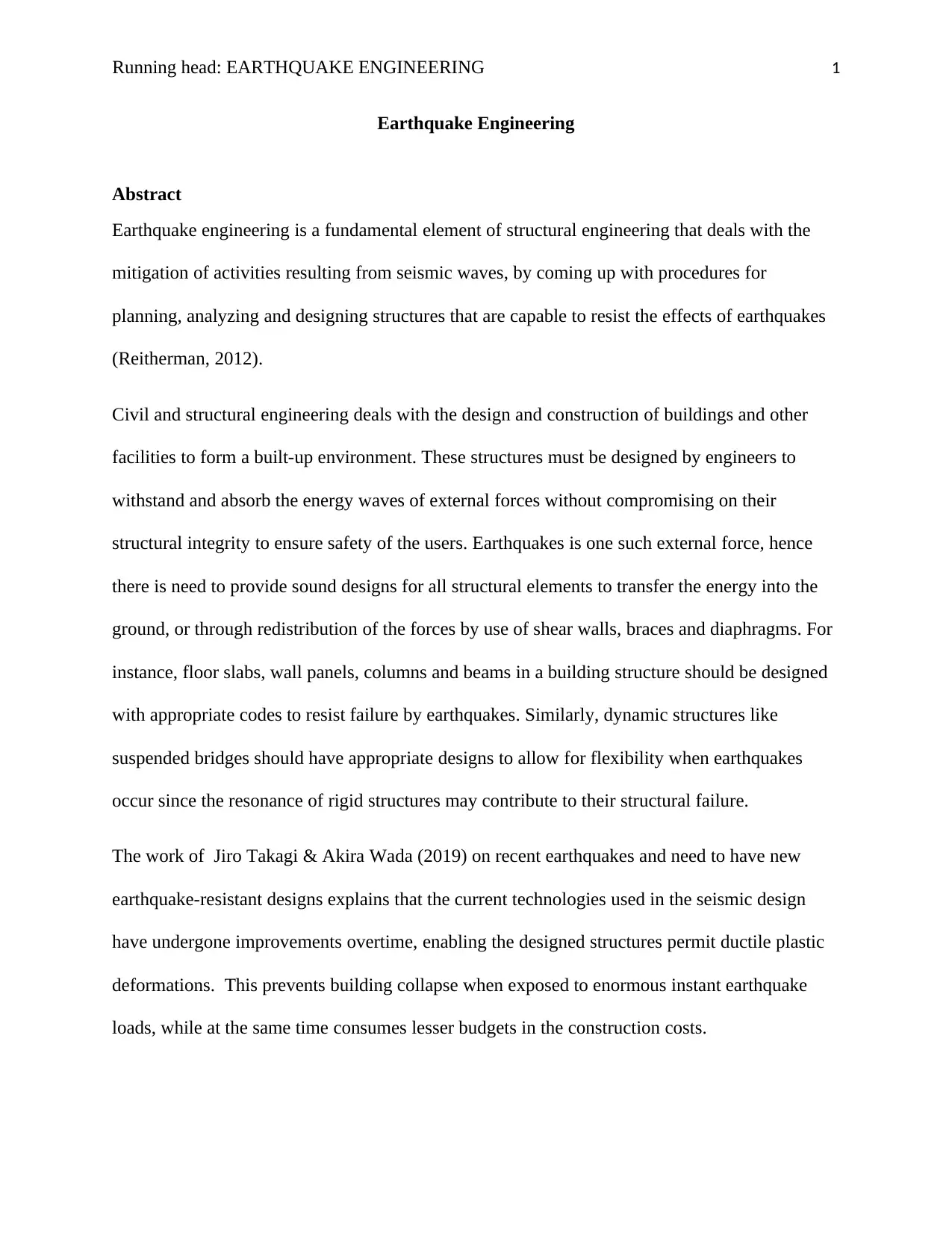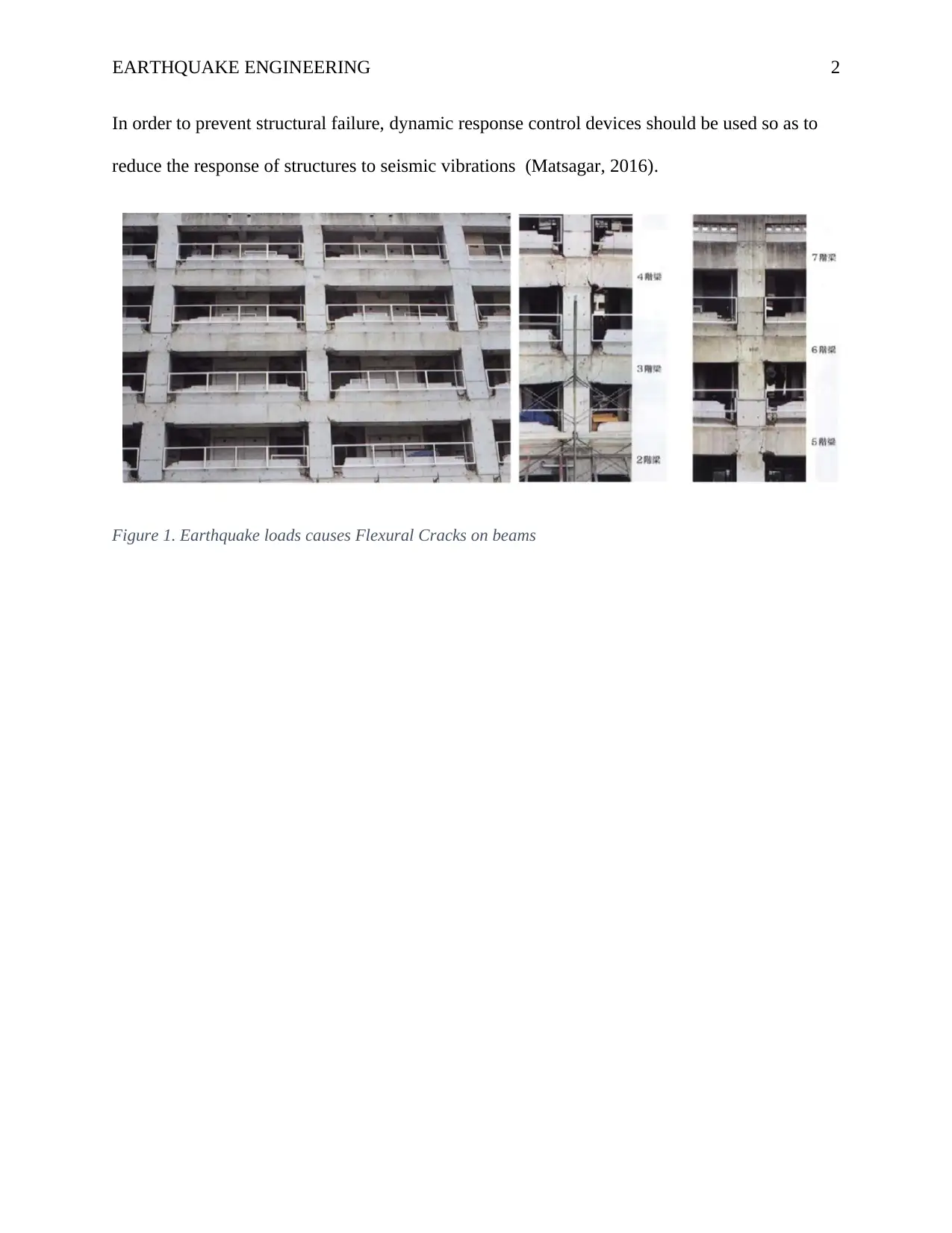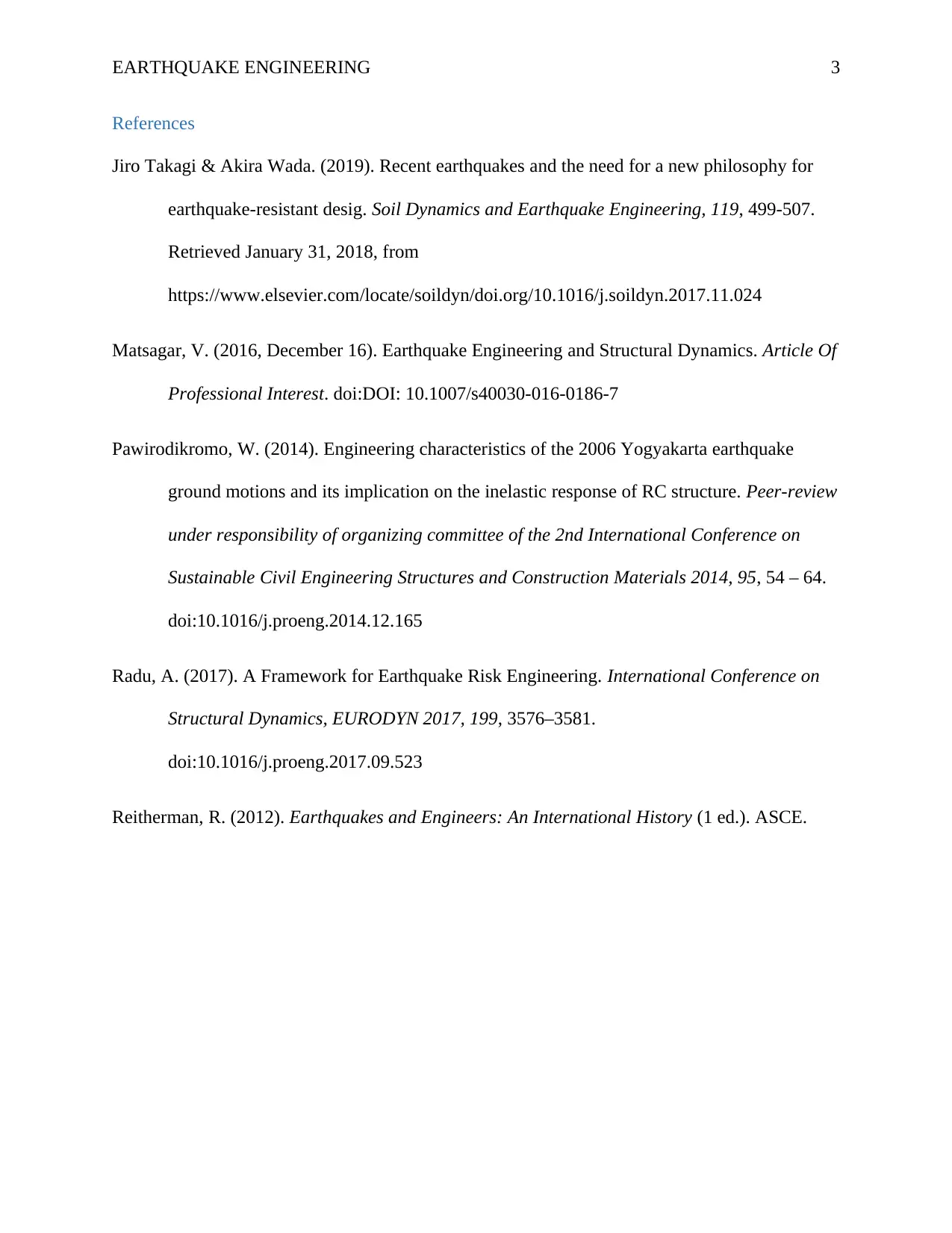Earthquake Engineering Report: Seismic Design and Structural Integrity
VerifiedAdded on 2022/08/20
|3
|498
|18
Report
AI Summary
This report delves into the field of earthquake engineering, emphasizing the importance of designing structures to withstand seismic forces. It highlights the role of civil and structural engineers in creating buildings and infrastructure capable of withstanding earthquakes. The report discusses the significance of building codes, the design of structural elements, and the use of dynamic response control devices. It also examines the evolution of seismic design technologies and the need for structures to have ductile characteristics to prevent failure. The report references key literature on earthquake engineering, providing insights into the design of earthquake-resistant structures and the mitigation of seismic risks. The report also explains the effects of earthquake loads that can cause flexural cracks on beams. The report stresses on the need to consider the impact of earthquakes on the structural integrity of buildings and other infrastructure. It also references the work of Jiro Takagi & Akira Wada (2019) on recent earthquakes and the need to have new earthquake-resistant designs.
1 out of 3










![[object Object]](/_next/static/media/star-bottom.7253800d.svg)